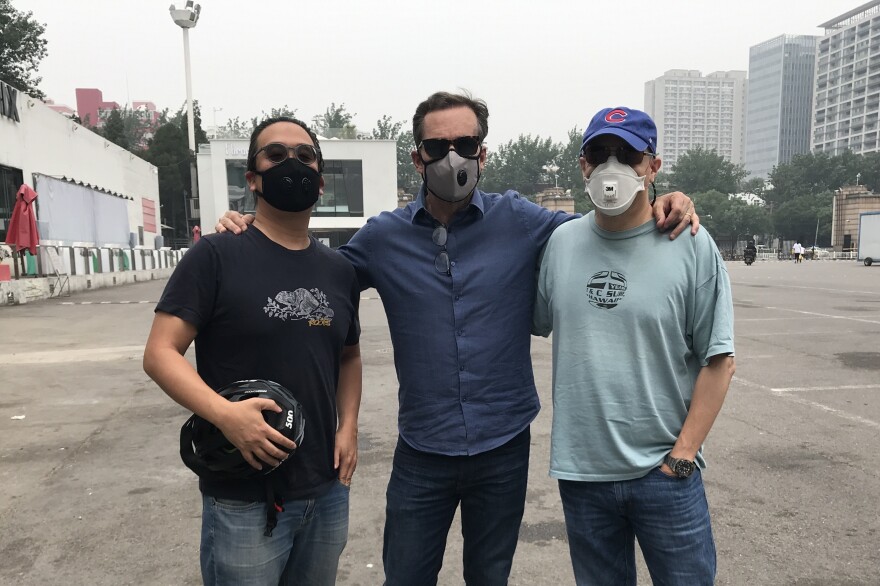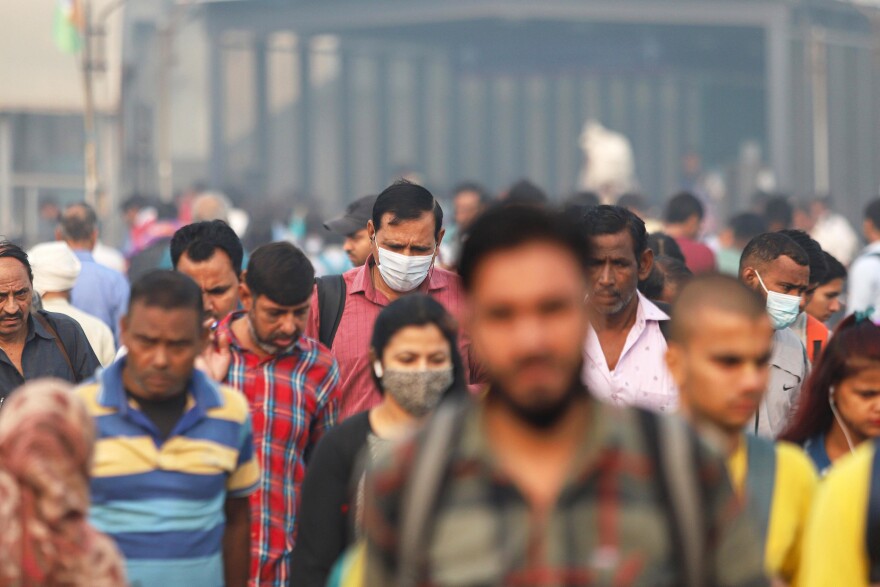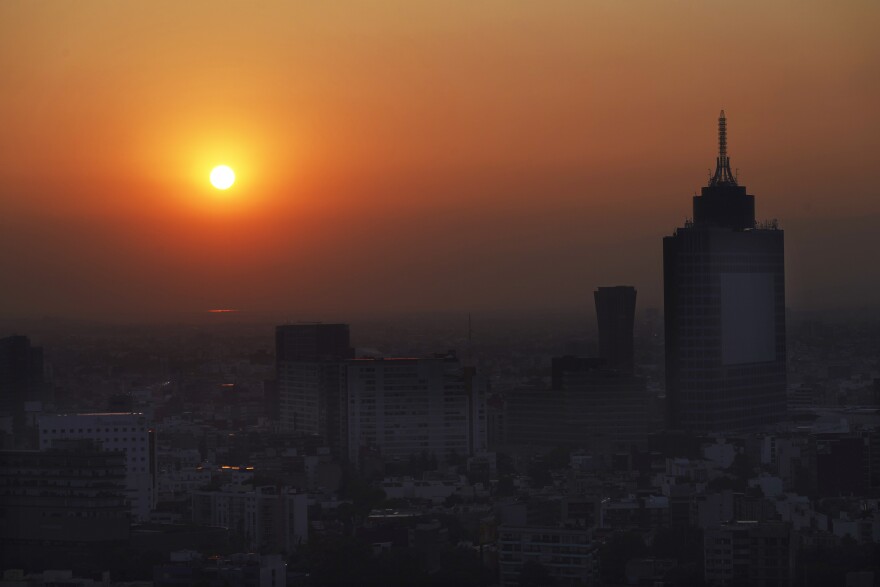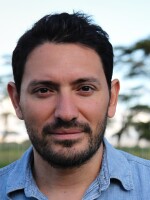This week, Canada and parts of the United States have confronted unprecedented declines in air quality due to smoke from Canadian wildfires, but people elsewhere in the world have long had to adjust and adapt to living with hazardous pollution levels. In some cases, those levels have improved over time.
NPR correspondents Anthony Kuhn and Eyder Peralta and freelance reporters Shalu Yadav and Kate Bartlett share what it's like in Beijing, Seoul, New Delhi, Mexico City and Johannesburg.
From Beijing to Seoul
I first visited Beijing in 1982, and lived there much of the time between 1992 and 2018.
In most of my years there, the pollution was terrible, especially in winter, although we didn't have ways to measure it. The air had an acrid, sulfurous smell, and soot was everywhere. To me, it was simply the cost of covering — and living — an epic story. People were less aware than they are now of the difference between weather and pollution, fog and smog.

Ahead of the 2008 Olympics, Beijing started to get rid of the coal stoves commonly used in the courtyard dwellings ("siheyuan" in Chinese) of Beijing's old city, and coal-fired heating plants, to help clean up the air ahead of the Games. Factories were moved farther and farther out of the city center. Coal-burning stoves in the courtyards were slowly replaced by electric heat.
While air quality in Beijing has improved in recent years, even now, occasional dust storms blow in from the Gobi desert, turning Beijing's skies yellow in spring and covering everything in gritty dust. AQI readings of 500 or worse are still occasional facts of life.
When I moved to Seoul in 2018, I cheerfully assumed I'd be leaving the air pollution behind. But it has followed me.
In China, we usually spoke of PM2.5, particulate matter that penetrates deep into the lungs. In Seoul, people call it "fine dust."
Much of it blows eastward from northern China over the Korean peninsula. But South Korea's automobiles and heavy industry add their own smog to the miasma — as does, reportedly, North Korea. The pollution is one reason South Koreans were already quite accustomed to wearing face masks, even before COVID.
South Korean and Chinese environmental officials have met numerous times to try to find a joint solution, but with little immediate or visible result. There are plenty of days of AQI over 100 or 150. There's little I can do but cancel outdoor activities, and wait until the air clears.
--Anthony Kuhn, NPR Seoul correspondent

New Delhi
My beloved city is famous for its heritage and Mughlai food — and infamous for its horrid pollution, which reaches AQI levels of 500 to 600 in the winter.
When it's that time of the year, my mornings start with opening my AQI app to check the level of pollution outside. That level decides whether I go for an outdoor run or find a safe indoor space in a gym where air purifiers are showcased as a premium facility.
But some days I don't need my AQI app. It's so bad that my eyes burn as soon as I wake up, I can taste the pollutants in my mouth and my lungs feel like an overworked machine that needs a break!

The pollution is so bad that some studies suggest that breathing it in is as dangerous as smoking about two dozen cigarettes a day.
"Craving a smoke? Come to Delhi!" is an overused joke that circulates in WhatsApp groups here, to share a light moment amid the gloom overcasting the sky and our lives in the city.
Jokes apart, it's a very serious health issue. An estimated 1.7 million Indians died of pollution-related disease in 2019.
It has in fact become a big factor in making my future decisions.
My husband and I have been intently discussing if we should plan our first baby and raise her in this city or move to another city. It's a scary thought — seeing our future kid gasping for breath, and suffering breathing problems like so many other kids in Delhi.
--Shalu Yadav, freelance reporter
Mexico City
Mexico City was once known as the most polluted city in the world.

The air quality here is still bad — on Thursday, the AQI reached 123, which is unhealthy for people with respiratory problems. And you feel it — your eyes get watery, your throat scratchy and the sky looks hazy. But in the 1990s and early 2000s, air quality would routinely hit the 200s. So, how did it get better?
Essentially, the government got tough on pollution with a complex system of countermeasures. Less efficient cars are allowed limited time on the road. And as soon as the air quality gets bad — either too high a concentration of ozone or particulate matter — the government orders even newer, more efficient cars off the streets. They order factories to reduce their output, food vendors are prohibited from using charcoal and road work stops.
If the air quality doesn't improve, the countermeasures get tougher. It often means residents can't drive to work or school, for example, so they have to walk, bike or take public transportation. If it gets bad enough, government offices shut down.
All of this has made a difference. In the 1990s, measures like these were put in place every month. Mexicans used to joke the air was so bad, so often, that birds would die mid-flight. These days, really bad days are rare. We have only a handful of environmental contingencies a year.
--Eyder Peralta, NPR Mexico City correspondent
Johannesburg
Africa is well known for its stunning sunsets and wide open skies – Paul Simon even sung about them in his song "Under African Skies."
So when I moved to Johannesburg as a correspondent, after previously working in heavily polluted Hong Kong, I found the fresh air in my leafy suburb a welcome change.
But in South Africa, one of the world's most unequal countries, air quality depends a lot on where you live.
According to the 2022 World Air Quality Report, the wealthy city of Cape Town had some of the best air quality in the country, while Thabazimbi, an iron mining town in northern Limpopo province had some of the worst.
Such disparities led environmental groups to sue the government last year in a groundbreaking case in which the judge ruled the unsafe levels of air pollution in the coal mining region of Mpumulanga were in breach of residents' constitutional rights to clean air.
Elsewhere on the continent, things are a mixed bag, with countries like Chad, Burkina Faso, Sudan and Egypt all showing high levels of pollution, while Angola and Kenya had relatively low levels.
One of the main impediments to monitoring air quality in Africa is the limited availability of reliable data, according to IQAir, with only 19 countries across the continent monitored.
Chad was found to be the most polluted of those, actually topping the global list as the country with the worst air quality in the world in 2022 – beating New Delhi. IQAir credited the country's regular dust storms as one of the reasons behind the poor levels of air quality.
--Kate Bartlett, freelance reporter
Copyright 2023 NPR. To see more, visit https://www.npr.org.





